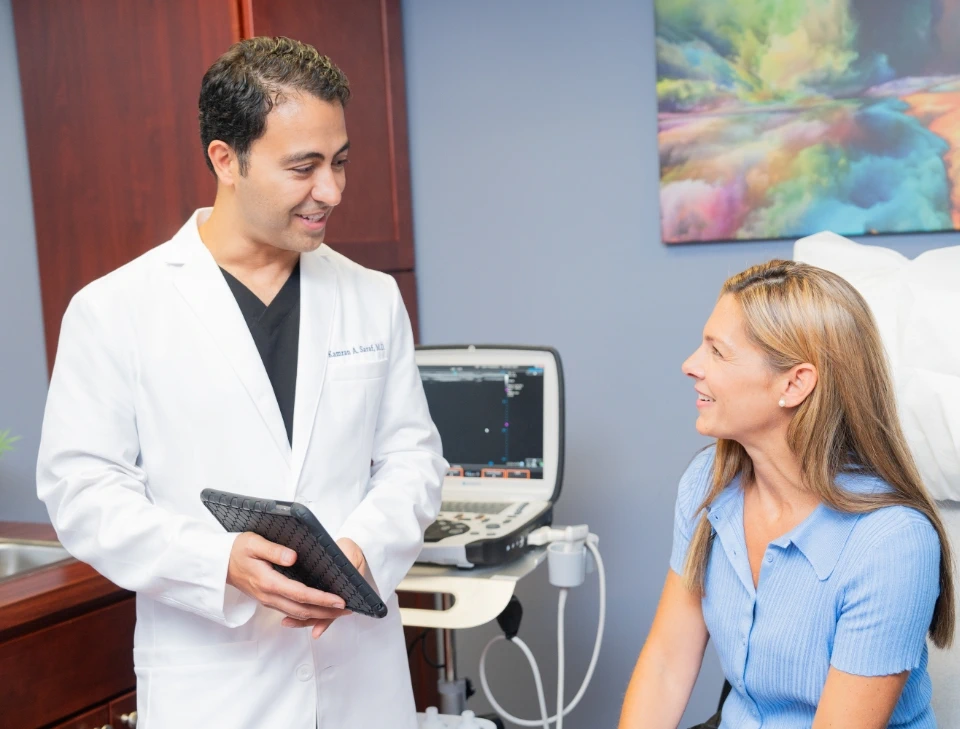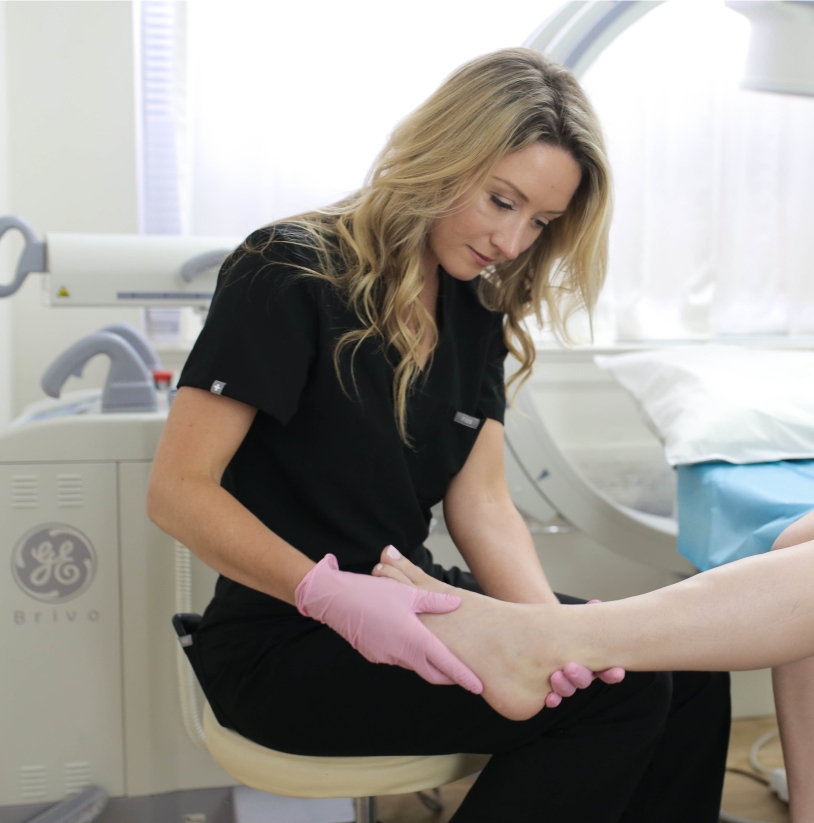Introducing Dr. Kamran Saraf
Dr. Kamran Saraf is one of Long Island’s most talented vein doctors, currently seeing patients at Vein Treatment Clinic’s state-of-the-art facility in West Islip. You can find Dr. Saraf at 500 Montauk Hwy, right on the border of Suffolk County and Nassau County, a short 5-minute drive from the southern state parkway. You may schedule a consultation online or call us at +1 631-212-1456.
Ratings & Reviews
Dr. Saraf is widely considered the best spider vein doctor in Suffolk County, as evidenced by his 5-star ratings and reviews from patients. Of his vein center, one of his patients said, “I’ve had vein problems and leg pain for years, and am so happy I finally got the courage to get checked out. The doctors had great manners, were extremely knowledgeable, patient, and understanding. Felt right at home from the moment I was greeted at the door by the staff.”

Bedside Manners
Dr. Saraf is widely known for his excellent bedside manners. He carefully examines your leg veins, discusses your cosmetic goals, and walks you through every step of the vein treatment process. He aims to ensure your vein treatments aren’t just successful but also comfortable and convenient. He curates each vein treatment plan according to your specific needs, concerns, lifestyle, and insurance coverage options.
Educational Background
Dr. Kamran Saraf has an excellent educational background. He graduated with Honors from the University of Maryland with a bachelor’s degree in Neurophysiology, obtained his master’s degree in Physiology and Biophysics from Georgetown University, and his medical degree from the University of Miami. He also completed his training in General Surgery at Texas Medical Center and finished his residency training in Anesthesiology at the University of Miami / Jackson Memorial Hospital.

Awards & Recognition
Dr. Saraf is the recipient of numerous awards, laurels, and scholarships. He won the Maryland Senatorial Scholarship and the University of Miami Academic Achievement Scholarship. He has also been titled the “Most Compassionate Doctor” and received the Patient’s Choice Award” for his practice. And he’s often asked to deliver lectures and television interviews. It goes without saying, Dr. Saraf is held in high esteem for his exceptional experience and skills with vein treatments.
Vein Treatments
Dr. Saraf has a unique spider vein treatment process that ensures optimal results without complications. Instead of simply removing the visible spider veins, he addresses the root cause of your vein problems. He uses the latest vascular imaging tests to identify and treat the underlying venous insufficiency responsible for spider veins, minimizing the risk of your spider veins returning. The next section walks you through every step of the vein treatment process.
Step 1: Initial Consultation
Your spider vein treatment starts with an initial consultation and diagnosis. The primary goal, at this stage, is to understand your concerns and determine if you have underlying chronic venous insufficiency. The following are the various phases of the initial consultation:
- Visual Examination: The vein doctor examines your spider veins and leg veins to identify the signs and symptoms of vein disease. He’ll also ask you if you experience leg heaviness, restless leg syndrome, throbbing leg veins, or frequent leg cramps — warning signs of venous insufficiency.
- Medical History: The vein doctor reviews your medical history. This serves two purposes. First, it indicates the ideal vein treatments for your specific needs. And second, it reveals if you have a history of blood disorders, deep vein thrombosis, or other risk factors for vein disease.
- Vascular Imaging: The vein doctor administers vascular imaging tests, like Duplex Ultrasound, to visualize the blood flow in your leg veins. This conclusively identifies underlying venous insufficiency — or lack thereof.
Step 2: Treatment Plan
Dr. Kamran Saraf collaboratively curates a vein treatment plan for your specific needs. He explains all your vein treatment options, the pros, cons, cost, insurance coverage options, and recommends the ideal treatments for you. He curates the vein treatment plan based on your specific goals, concerns, diagnosis, and insurance coverage options. As such, each spider vein treatment is personalized to the patient’s individual needs.
Step 3: Primary Vein Treatment
The primary vein treatment is only necessary for patients with underlying chronic venous insufficiency. The primary vein treatment consists of minimally invasive vein treatments that close or destroy the diseased saphenous vein responsible for your vein problems. Removing the diseased vein allows the accumulated blood to reroute to healthier leg veins. The following are your primary vein treatment options.
- Radiofrequency Ablation: The vein doctor channels thermal energy through a catheter via an incision on the skin’s surface.
- Endovenous Laser Ablation: The vein doctor channels laser energy through a laser fiber via an incision on the skin’s surface.
- VenaSeal: The vein doctor injects a medical adhesive into the diseased vein under ultrasound guidance.
Step 4: Spider Vein Treatment
The spider vein treatment is suitable for patients without underlying venous insufficiency or after the primary vein treatment. Sclerotherapy is the ideal spider vein treatment — the vein doctor injects a medicine called sclerosant into the spider veins to seal its walls, turning it into a hardened scar tissue that gets absorbed by the body. Over time, the spider veins shrink, harden, and fade away.
Step 5: Recovery
Minimally invasive vein treatments conclude within 30 to 60 minutes without downtime. The vein doctor will discuss your post-treatment recovery guidelines and allow you to resume your daily activities immediately. The following are some post-treatment recovery tips:
- Wear compression stockings for a few weeks.
- Walk frequently to ensure smooth blood circulation.
- Talk short walking breaks between long periods of sitting.
- Avoid heavy lifting and strenuous workouts for a few days.
- Run, swim, cycle, or engage in other cardiovascular exercises.









